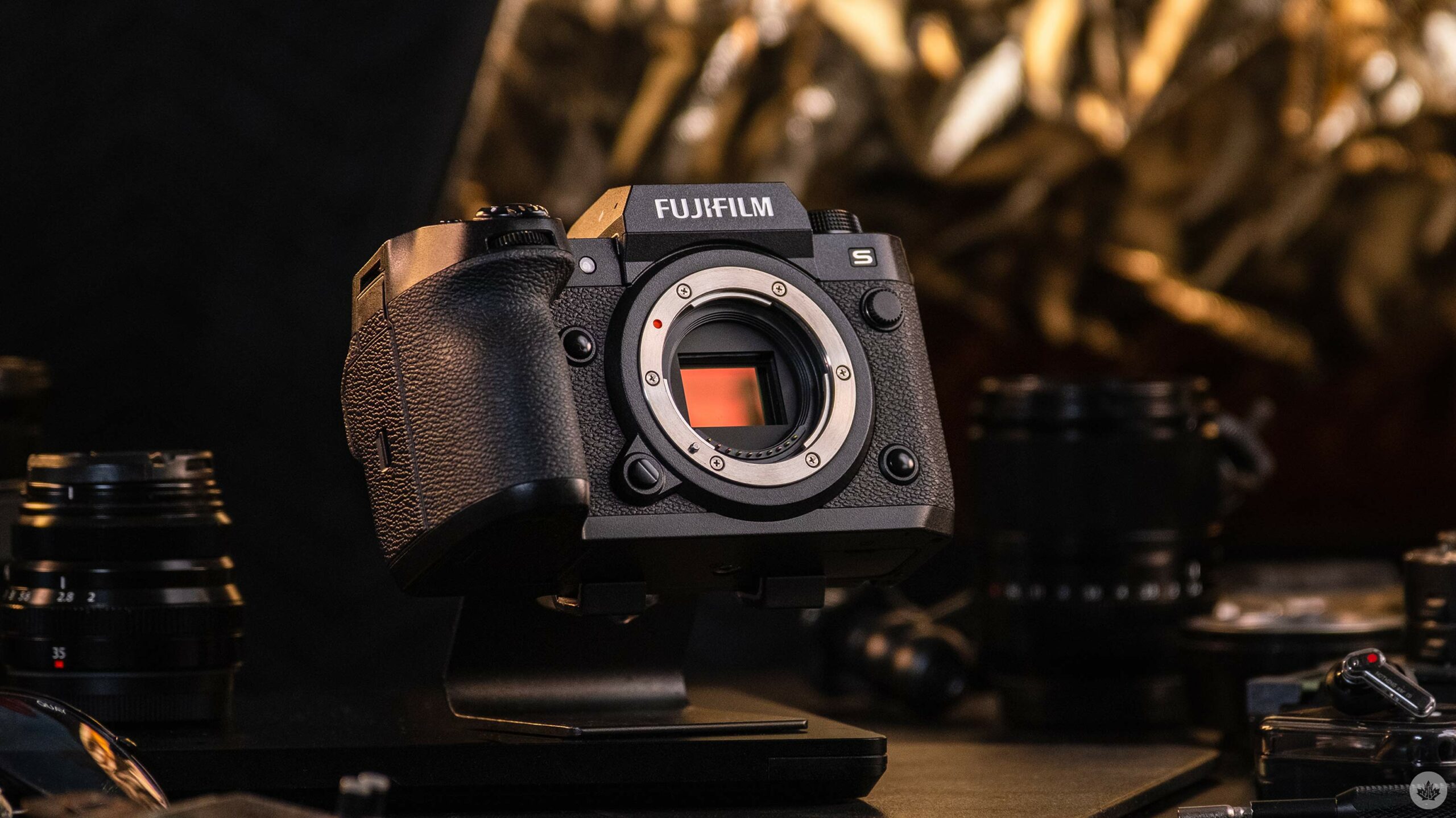Fujifilm’s X-H2S is a photographic weapon
I’ve been a fan of Fujifilm for years, but the sub-par focus in my aging X-T3 camera has started to push me toward Sony because of its legendary autofocus.
Leading up to the release of the X-H2S, the rumours were swirling that this camera would take Fuji’s autofocus to the next level. I was skeptical, but when I finally got the chance to test out the new camera, I didn’t hesitate to grab it, and Fuji didn’t disappoint.
My faith has been restored, and I’m excited for this technology to make its way across the entire lineup. It’s a game changer for the brand, and the new X-Trans V sensor has set the tone for a much more competitive era for the Japanese camera giant.
Who is the XH2S for?
Dressed up with the extra Battery Grip and the fan accessory the X-H2S is a beast.
Like a lot of tech, Fujifilm’s camera lineup doesn’t have the most intuitive naming scheme. All you need to know is that the X-H cameras are the top of the line hybrid systems. The ‘S’ at the end of the name denotes ‘Speed’ and means this camera is more video-focused.
It’s still a hybrid camera, but the video cornerstone is important since Fujifilm cameras aren’t often marketed in this space. The new flagship’s apparent video backbone represents a fundamental change for the company and the tech it uses.
With seven stops of stabilization, outstanding colour science and minimal rolling shutter, this camera is packed with the right tools for making great videos with minimal kit. On top of that, it also features the best autofocus Fujifilm has ever developed, and the ability to shoot in 6.2K, making it easy to crop in for posting across various mediums.
~ watch the video in 4K on our YouTube channel. ~
I’ve been shooting with an X-T3 and an X-S10 for years, and while those two cameras produce beautiful shots, I find I often need to work for them. When using autofocus, I re-shoot shots two or three times before it performs as I want it to. The X-H2S, by comparison, feels more intelligent, missing focus less and holding on to what I want more consistently.
All of this packed into one unit means it’s expensive ($3,200), but after almost two months with the camera, I’d argue this cost is worth it. If you’re a casual videographer, you might like the regular X-H2 or the new X-T5. Both are capable video machines, but with more of a photography focus and a lower price. However, if you want a video camera to grow into over the next few years, the X-H2S is unbeatable.
My favourite things about it
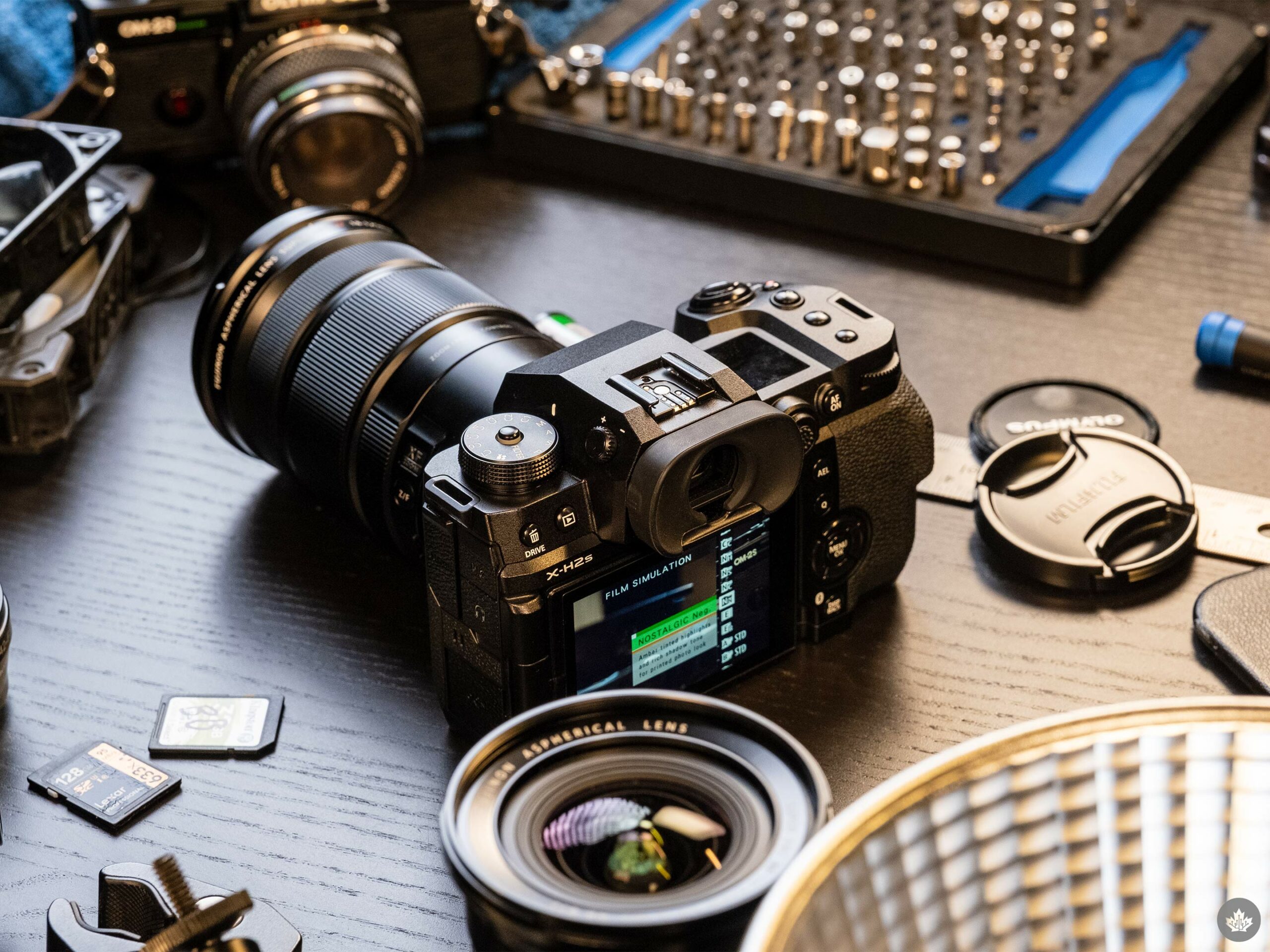
Regardless of its size, the X-H2S is lighter than it looks.
This camera is a beast, but for me, the best thing is the reliable autofocus. If the subject is wearing sunglasses, on the move, or in a busy area, the X-H2S would just work. I cannot wait to test this new system in a more petite body like the X-T5 or a potential X-S20. The autofocus wasn’t perfect, but it’s a big enough step up in reliability.
The next best thing about this camera is the plethora of custom buttons and dials. There are seven custom modes on the PSAM dial. I only managed to set four during my time with the camera, but given a little more time, I could have easily set up all seven. Quickly jumping between slow motion, standard motion, photos, different colour profiles and shooting modes that are pre-tailored, was a great way to up my efficiency.
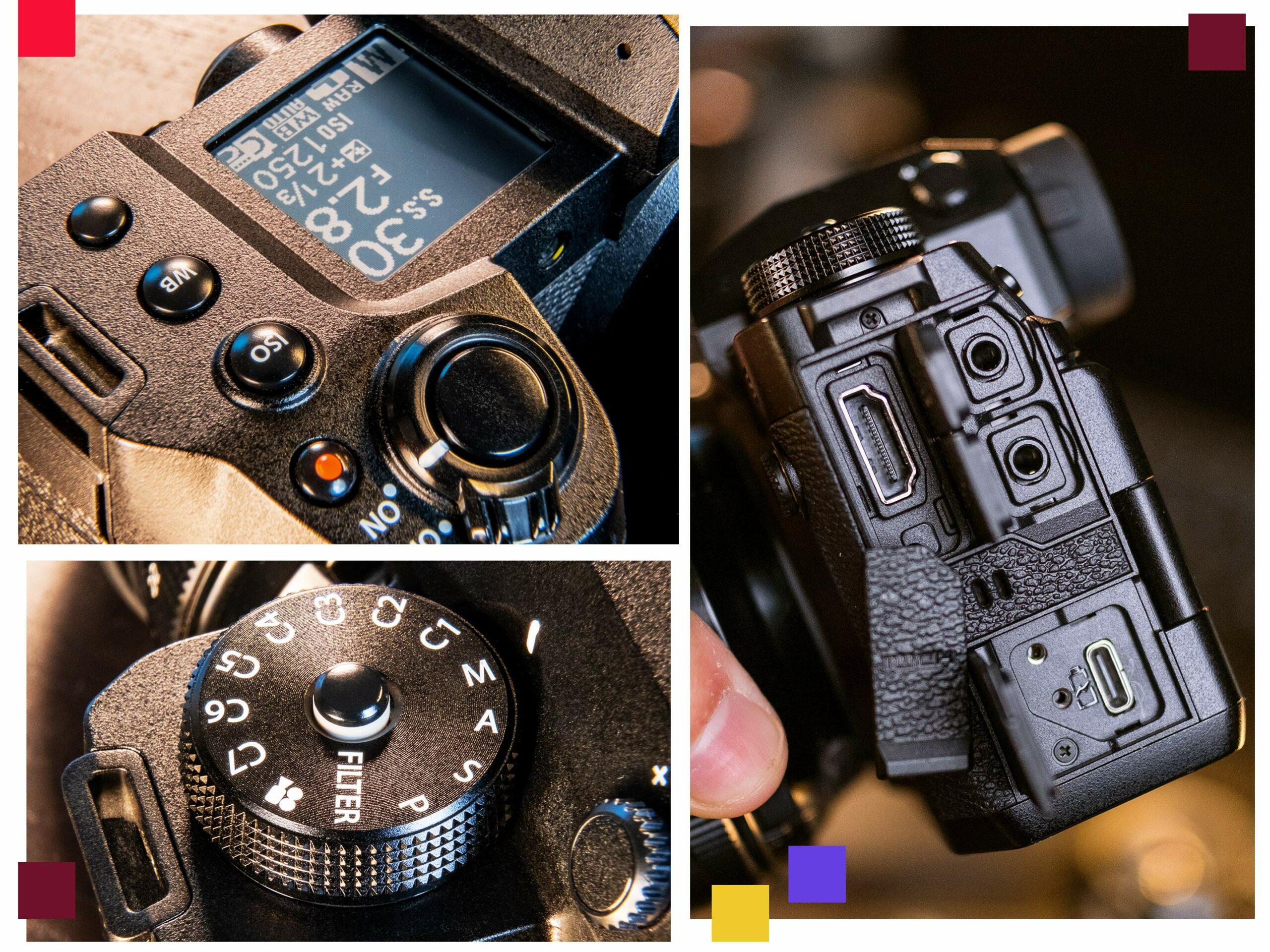
The microphone built into the camera is much better than previous models as well.
One perks of Fujifilm cameras is that you can set custom colour profiles. However, it’s cumbersome to enable and requires substantial work to turn on and off. On my X-T3, I don’t use it much. However, since there are seven custom slots on the X-H2S, I can pre-load two or three of them as different film simulations and switch to them for fun. It’s a small perk, but it unlocks a bit more fun with the camera.
Across the camera from the top dial, an e-ink screen shows your shooting settings. When the camera is off, your remaining battery life and SD card space appear. Opening my bag and seeing the camera’s battery at a glance sounds like a small thing, but it’s extremely convenient.

The 18-120mm power zoom lens has moved up to the top of my wish list. It’s incredibly versatile.
The battery life on the X-H2S was excellent, and I was able to get through a full day of shooting on a golf course with a single battery. This put the X-T3 and X-S10 to shame. Later, I shot a wedding and only needed to charge the camera twice.
Other improvements include individual doors for the microphone, headphones, full-sized HDMI and USB-C ports. This means it’s easy to recognize what jack is which. As someone who has plugged my mic into the headphone jack on my current camera, I appreciated this. All the ports are weather sealed, so you can take this camera into the rain, and it’ll hold up if you have the right lenses.
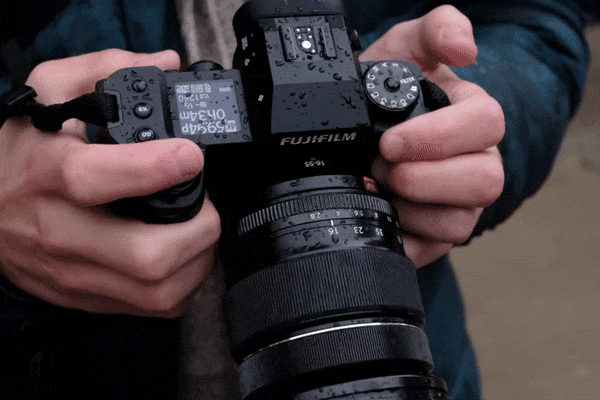
Rain or shine the X-H2S performed.
Beyond those aspects, the most significant change for me is how physical this camera feels to use. The added power and size make it feel like you’re carrying a weapon. Just point, and shoot. The power of the X-H2S will do the rest. Since it’s a larger camera, it’s not subtle, but it’s not unwieldy either. I’ve loved touting it around, but it’s a stark contrast to the X100V that I truly carried with me everywhere. This machine is larger and more deliberate.
Where it could improve

In the hand, this camera felt more like a Sony than a Fuji to me.
To start, the joystick is placed too far left on the camera body for my hands. It’s quite a reach to adjust settings on the fly. Since the new joystick design is such a low profile, having it closer to where my thumb rests naturally would make it a lot less cumbersome to use when filming.
As with all cameras, the menus could use a little more streamlining and consistency. Features being locked behind different modes and only working in some instances can get frustrating. It’s entirely useable, I’ve built my career on Fujifilm cameras, but there’s a steep learning curve to the menus.
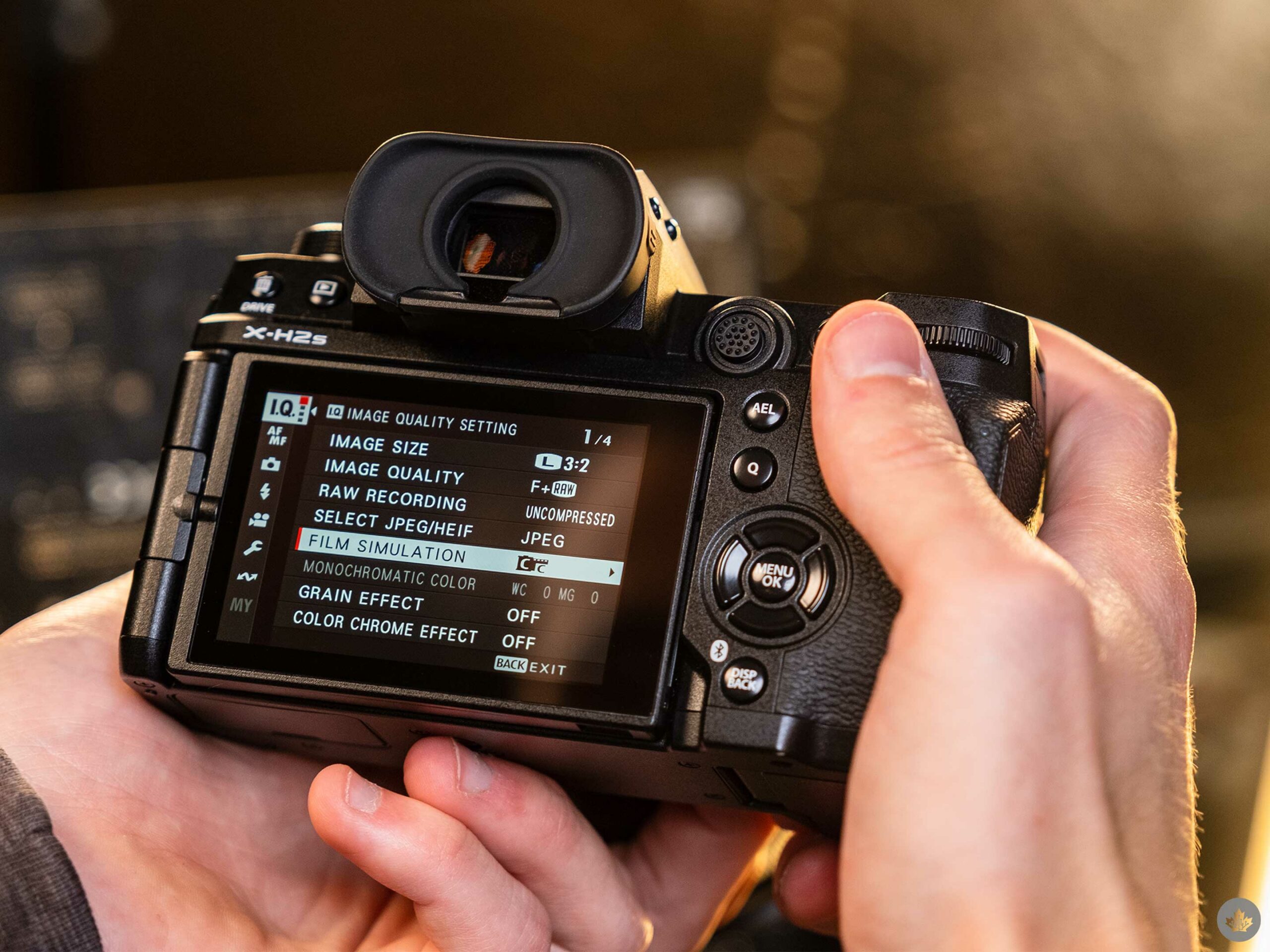
Learning the menus is going to get you acquainted with the Pal2Tech channel on YouTube.
Beyond outdated menu software, some features could be tweaked for ease of use. For example, this camera has a much-needed flicker reduction setting in video. That said, if you move from 24fps to 60fps, you have to go back into the menu, turn flicker reduction off, change your shutter speed and then go back into the menu and re-enable flicker reduction. It’s quite annoying.
Outside of that, a fast charge system built into the camera would be awesome. I assume most people who own this camera will pick up multiple batteries anyways, but at the top of the line, being able to charge up in 30-45 minutes would be a nice perk.
There were a few moments where I missed the dedicated ISO dial from my X-T3, but I was able to get used to the top button quickly enough. Ideally, Fuji will update the camera to allow you to set ISO to one of the custom dials in the future, which would make the switch a lot less jarring.
A hybrid camera?

My trusty 16-55mm felt right at home on the X-H2S.
While the focus of this camera leans a little further towards the video side of things, the photos it can take are still stellar.
The new X-Trans V sensor looks richer to my eyes than the older X-Trans IV that I’m used to, and I love it. Bringing more colours into bleached or desaturated profiles like ‘Classic Chrome’ and ‘Nostalgic Negative’ made those profiles pop. Others, like Astia, were a little more heavy-handed, but since there are 13 different profiles to choose from now, there’s likely something for everyone.

My personal favourites were the new Nostalgic Negative and Classic Negative. Nostalgic Negative in particular, offered a great effect with slightly over-exposed images, and I loved how Classic Neg made the blue in the sky pop. Nostalgic Neg is only on new cameras, including 2022’s X-H2, X-T5 and some of the larger Fujifilm medium format GFX cameras. Hopefully, they’ll come to the other new devices in 2023 and beyond.
I have no complaints about either the 26-megapixel JPEG or RAW files from the camera either. The JPEG files are fun to use since they often have fantastic colours and can still be edited enough for most basic situations. If you want even more colour out of them, you can shoot 10-bit HEIF files like some newer phones. Just be warned that these images might not be as compatible with all software later on. The RAW files, on the other hand, offer ample data for editing in post and for work.

That said, the ultra-fast readout, good autofocus and in-body stabilization made the X-H2S a great street photography tool. The large size and flip screen didn’t help much, but this camera is a sniper, and you can make it virtually silent if you want to.
Another small perk that I liked was the new ‘Feather-touch’ shutter release button. Coming from the dumb shutter button on the X-T3 where you need to buy a secondary attachment to screw into it, the simplicity of the X-H2S was a breath of fresh air. It also feels great to press, and the virtual shutter sound on this camera is Fuji’s best attempt yet. It’s very responsive while still giving the feeling of a good click.
~ You can view all the sample images at their full resolutions and RAW files here. ~
For all the latest Technology News Click Here
For the latest news and updates, follow us on Google News.

